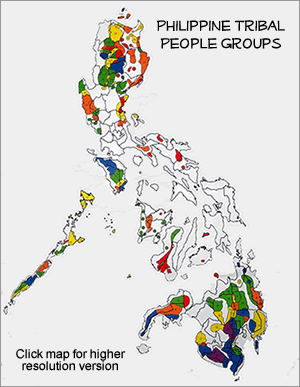The Ivatans are of various physical types. The dominant one is the Malay. Others have physical characteristics peculiar to the Ainus of Japan of short stature, fair complexion and small slit eyes.
The Ivatans live in houses made of coral and limestone cement with thatched roofs made of grass. Their houses have square structures that have two big windows as big as doorways. The presence of typhoons all year round, needs that the houses' walls and roofs to be built almost a meter thick, while the floor is raised about two meters high.
The Ivatans are peace-loving people and are very clannish. Their geographical location is one of the major problems of the Ivatan society. They are isolated by rough seas all year round from the mainland Luzon.
The Ivatan courtship practice is typical among the Filipinos from Luzon. A man has to render service to the family of the woman he'd like to marry. Marriages are officiated in the church and celebration usually follows the wedding ceremony with feast and dancing.
The economy of the Ivatans is greatly affected by their geographical isolation from the mainland Luzon. The year round presence of typhoons and rain make it very difficult for the Ivatans to increase their source of livelihood. Regular transportation is needed in order to increase their trade and market with other neighboring islands, especially Luzon.
Because of their small population, the Ivatans have little to say regarding national political decisions. However, in their local government, they have the right to vote their choice of leadership and they can participate in their local development.
At present, most Ivatans are Catholics. However, there are a few who have not become Christians and continue to adhere to a form of ancestor worship which venerates the dead as anito, who is responsible for the successes and failures of their relatives.
Scripture Prayers for the Ivatan in Philippines.
| Profile Source: Asia Missions (AMNET) |











